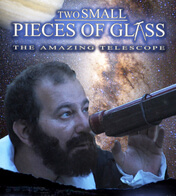
- This event has passed.
Homeschool Program: Wednesday, Sept 17 at 10:30 a.m.

Homeschool Program: Earth’s Place in the Universe
Wednesday, Sept 17 from 10:30 – 11:45am
This Homeschool Program will focus on the starting point for all human knowledge and understanding of our universe – our home planet of Earth, and it’s place in space and the universe.
Join Dr. Dan Polsgrove, Astronomer, Planetarium educator and former Astronomy professor here at the Academy, for a beginning journey into space and how we know what we know. Topics covered will include a brief history of Astronomy, which will teach us how we know what we know and how we continue to learn more. Today will also include an overview of our solar system, which is a critical component in the lessons under the Science Standards heading, “Earth’s Place in the Universe.”
In addition to the Live portion of the show, the short film “Two Small Pieces of Glass” will be shown. From Galileo’s first telescope to current times, this film gives an understanding of how space discoveries are made and how space science is understood.
With our limited seating, please only reserve seats if you know you will be attending. If you RSVP and your plans change for any reason, please email Jeff our Planetarium Director at planetarium@afacademy.af.edu so we can release your seats.
BASE PASS:
Everyone who RSVPs for this event will receive an email days prior to the event with a QR code which can be used to request a base pass for the event. All visitors to the Air Force Academy, 18 years old and older need to either be accompanied by a DoD card holder or request a base pass.
Related NGSS Science Standards:
- 1-ESS1-1 Earth’s Place in the Universe (e.g. Use observations of the sun, moon, and stars to describe patterns that can be predicted)
- 5-ESS1-1 Earth’s Place in the Universe (e.g. Represent data in graphical displays to reveal patterns of daily changes in length and direction of shadows, day and night, and the seasonal appearance of some stars in the night sky)
- MS-ESS1-1 Earth’s Place in the Universe (e.g. Develop and use a model to describe the role of gravity in the motions within galaxies and the solar system)
- HS-ESS1-1 Earth’s Place in the Universe (Construct an explanation of the Big Bang theory based on astronomical evidence of light spectra, motion of distant galaxies, and composition of matter in the universe)